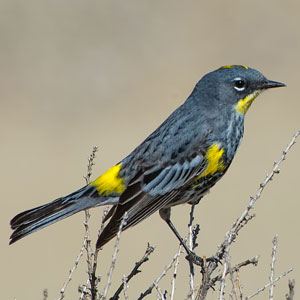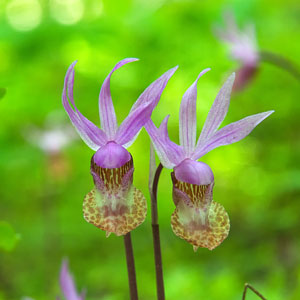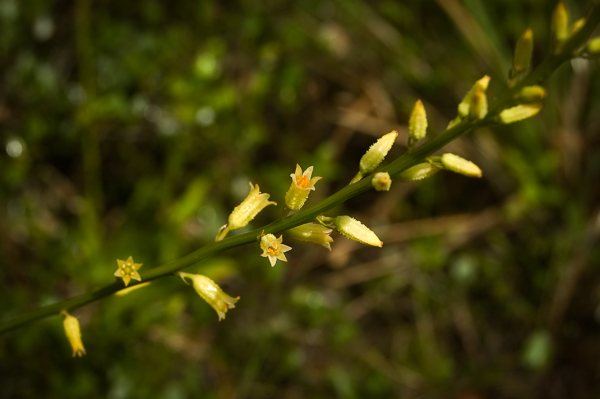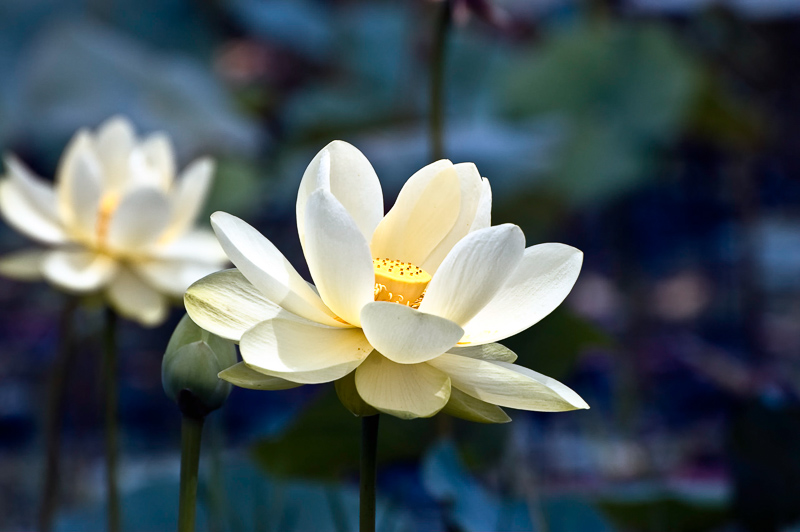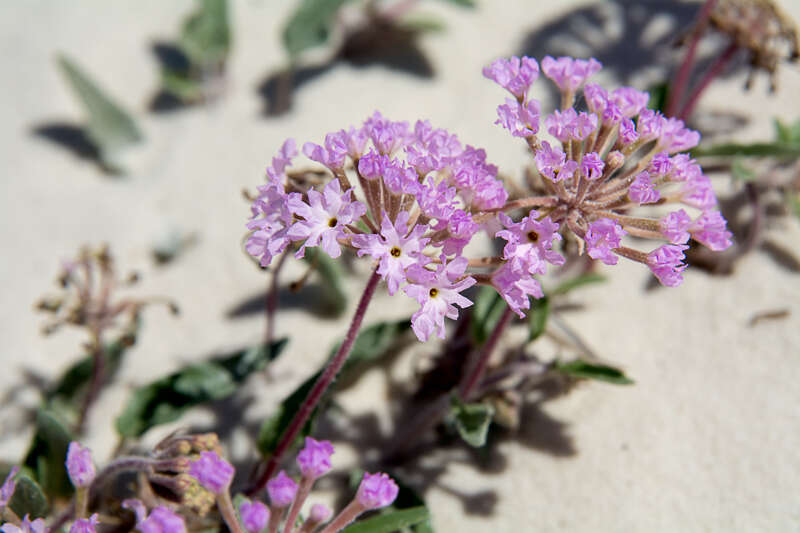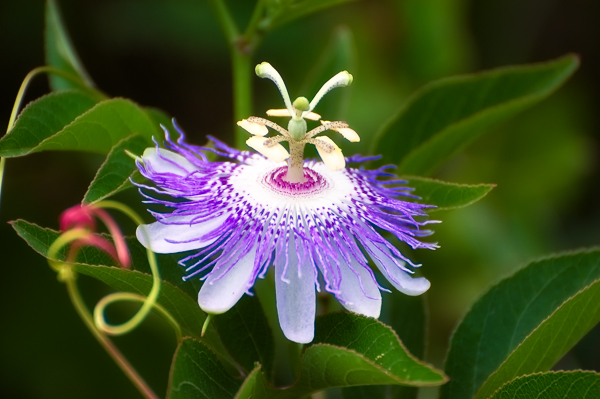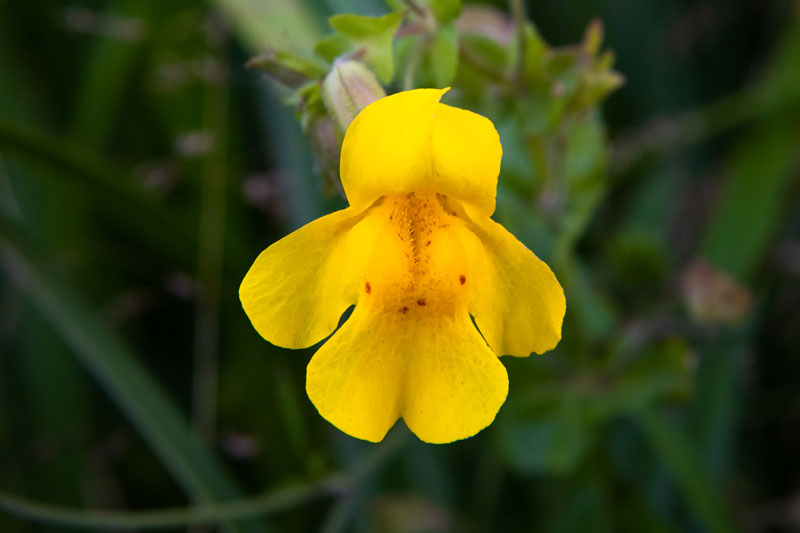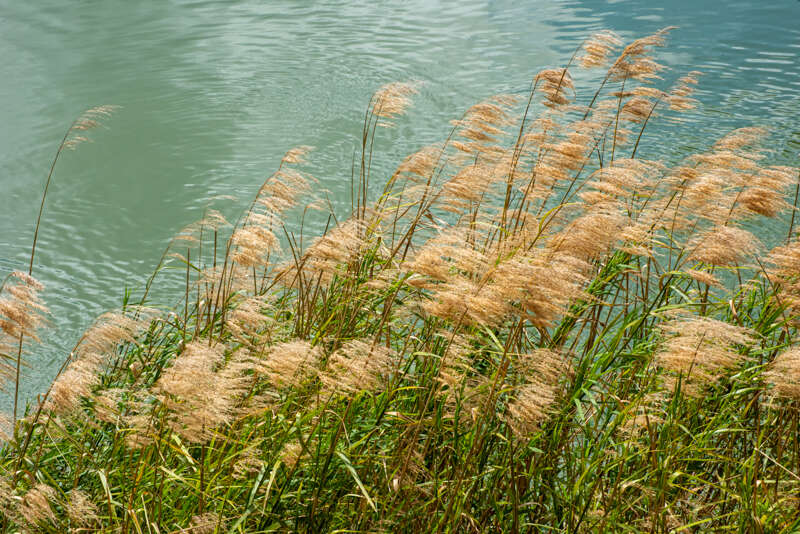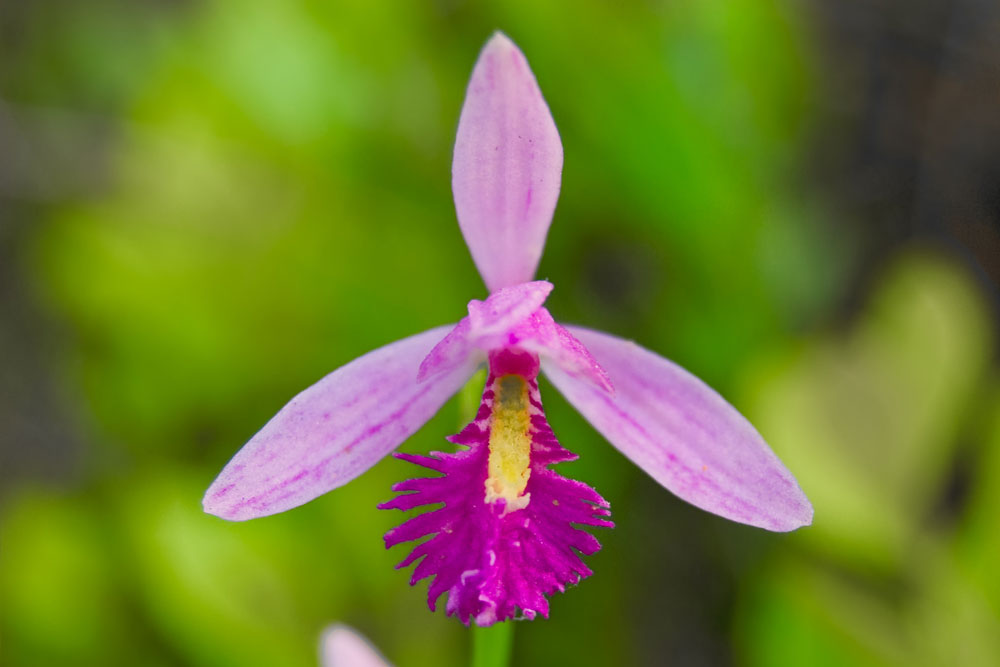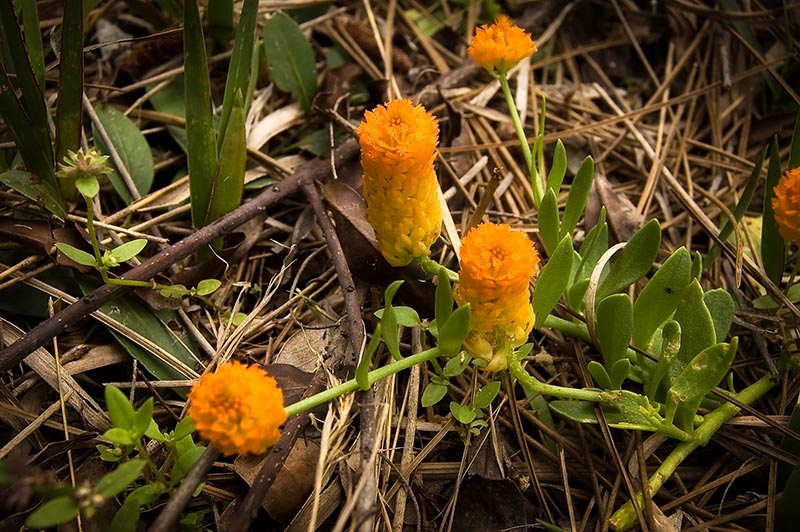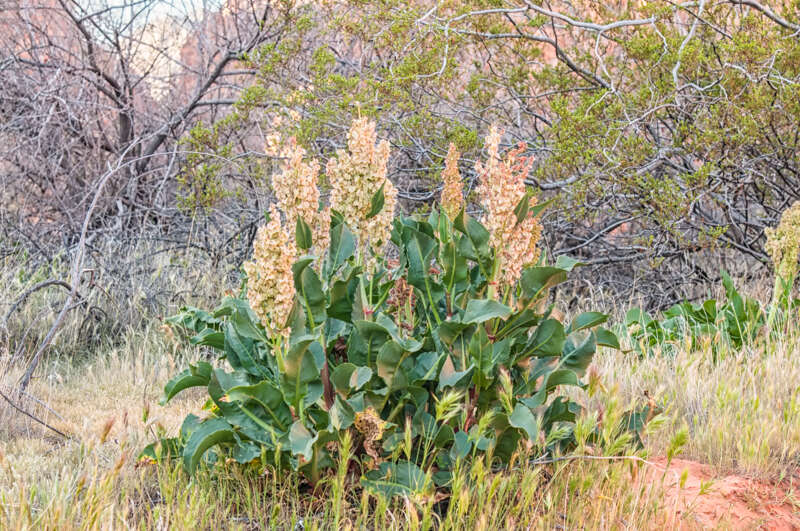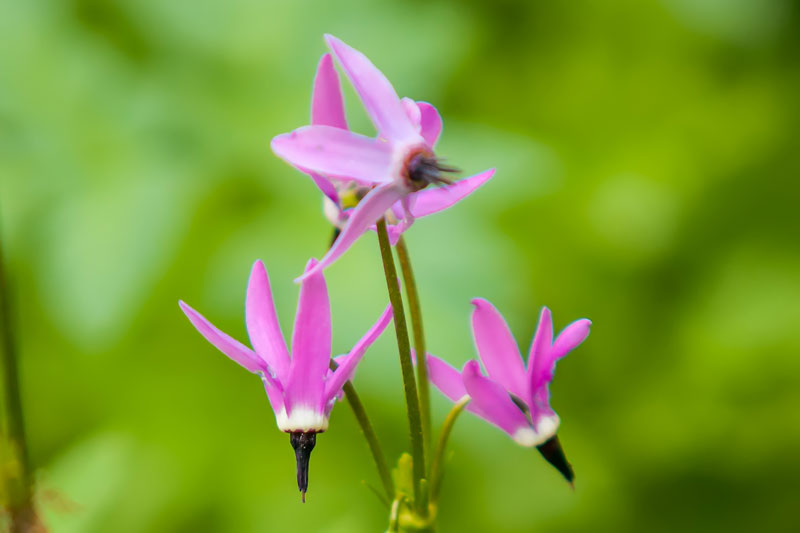Wildflowers by Family N-P
Nartheciaceae (Colicroots)
These unusual perennials are known for having tall, woody and leafless stems with stiff, firm and whorled tubular flowers. Formerly associated with the lily family, they have since been moved into their own botanical group.
Nelumbonaceae (Lotus Family)
The lotus family is an aquatic plant group that contains one genus and only two species (only one is native to North America). While often mistaken for waterlilies, they are not closely related.
Neottieae
Members of the terrestrial Neottieae tribe of America’s native wild orchids are usually encountered in undisturbed forests and tend to be very small and blend in with the forest floor with tiny green and brown flowers. The only exception is our native giant helleborine orchid (Epipactis gigantea) that is large, showy and usually found near water and in direct sunlight.
Nyctaginaceae (Sand-verbenas and Lantanas)
Also referred to as the four o’clock family because of their tendency to bloom late in the day, and have long tubular flowers that typically grow in clusters. Most of them are found only in warm, to tropical climates.
Nymphaeaceae (Waterlilies)
No pond would be complete without lilypads, and you can’t have those without waterlilies. As you guessed it, these aquatic plants grow from rhizomes in the mud under ponds, and shoot up stems with floating leaves and incredibly beautiful flowers. Not related to true lilies, they are found in slow-moving to still waters in temperate to tropical climates around the world.
Onagraceae (Evening-Primroses)
Sometimes also known as the herbwillow family, this family is found in the more temperate parts of the New World and easy to recognize. Every flower has four separate petals and sepals. The most common ones in North America are the various evening primrose species and fireweed!
Orchideae
Orchideae is perhaps the largest and most widespread tribe of wild orchids found in North America. These wildly adaptive terrestrial orchids have fleshy energy-storing rootstocks that allow them to fade, dry up and disappear underground until the next season when they are ready to poke above ground again.
Orobanchaceae (Indian Paintbrushes and Broomrapes)
While particularly beautiful and visually striking to look at, most members of this botanical family are at least partially parasitic on other plants that each species is associated with. In places with limited sunshine or nutrients, the ability to “steal” nutrients from other plants’ root systems is a great evolutionary advantage!
Oxalidaceae (Wood Sorrel Family)
Mostly known as the wood-sorrel forest herb commonly foraged here in North America with the sharp, tangy/sour taste due to the oxalic acid, perhaps the most well-known member in this family is the Asian tropical tree that gives us starfruit.
Papaveraceae (Poppies & Bleeding Hearts)
Until recently consisting of primarily wild poppies, the Papaveraceae family has been expanded to include Fumariaceae (bleeding hearts and fumeworts). While common in cultivated gardens, most members of this family contain medically-significant narcotic alkaloids and an acrid latex sap, which is responsible for giving us opium, heroin, codeine and morphine.
Passifloraceae (Passionflowers)
These fast-growing vines with their incredibly ornate and fantastically beautiful, colorful and large flowers, passionflowers are perhaps not as well known as you think they should be. Pollinated passion flowers give us the delicious passionfruit, which have all kinds of culinary uses on their own, they are best known as the distinctive flavor of Hawaiian Punch.
Phrymaceae (Monkeyflower and Lopseed Family)
This family of plants occurs in only two places in the world: Australia and North America. Almost all of them are found growing near or in water. In North America, members of this family can most often be found growing at the edges of mountain streams, waterfalls, and at high elevations.
Plantaginaceae (Plantains, Penstemons and Beardtongues)
One of the more constantly evolving groups of plants in terms of taxonomical classification, chances are that it’s going to keep changing. As it stands now, native North American members include the true plantains (the forb, not the large banana-like fruiting herbaceous plant) and the snapdragon-like penstemons. It’s very likely that this description will be rewritten – often!
Poaceae (Grass Family)
The most commercially important plant family for humans and many thousands of species of wildlife, and the fifth largest plant family, grasses are essential for providing such staples as rice, bamboo, cereal grains such as wheat, oats, barley, corn, millet, as well as food essential feed for most herbivores, and for those smaller animals that find shelter in or even under the grass.
Pogoniinae
With only around four species (orchid taxonomy is always in a state of constant change) found in North America, the pogonia tribe of orchid’s name means ‘beard’ or ‘bearded.’ They are most often located in sunny, wet open places and are often found growing among carnivorous plants.
Polemoniaceae (Phlox Family)
This five-petalled family of wildflowers and plants is mostly found in the New World (sometimes referred to as the Jacob’s-ladder family) and are found mostly in places with cool to arctic climates, with the most common types being our native phloxes, gilia and collomia.
Polygalaceae (Milkworts)
The milkwort family (Polygalaceae) is found all around the world and while most are easily overlooked as just another tiny wildflower, who would want to hike through the wilderness without getting a chance to see swaths of brightly-colored drumheads, spectacular fields of bachelor’s buttons or the tight clusters of the beautifully yellow-green candyroot?
Polygonaceae (Buckwheat Family)
Easily overlooked by the casual passerby, the buckwheat family has a long history with humans. Without Polygonaceae, we wouldn’t have food sources such as rhubarb, buckwheat, sorrel or dock. Other members include smartweed, bindweed and bistort.
Polystachyeae
In the United States, we just have one member of this beautiful flowering tropical epiphytic orchid tribe and that is the yellow helmet orchid (sometimes called the greater yellowspike orchid). It is found in the lower half of Florida in wetlands, but can also be found natively in Africa and Asia.
Pontederiaceae (Pickerelweed Family)
Primarily small aquatic flowering plants, members of the tropical/subtropical pickerelweed family can form massive “flotillas” of floating vegetation that can block waterways for people and choke water moving water systems for wildlife.
Primulaceae (Primroses)
Found mostly in the Northern Hemisphere in temperate climates, members of the primrose wildflower family tend to have woody stems, prefer wet to moist soil and have some sort of energy storage organ in their root system to enable them to overwinter.



